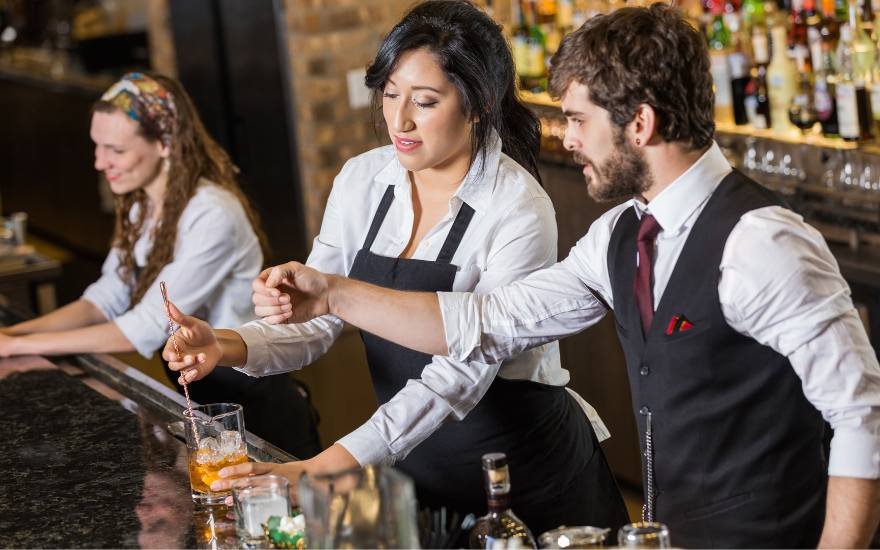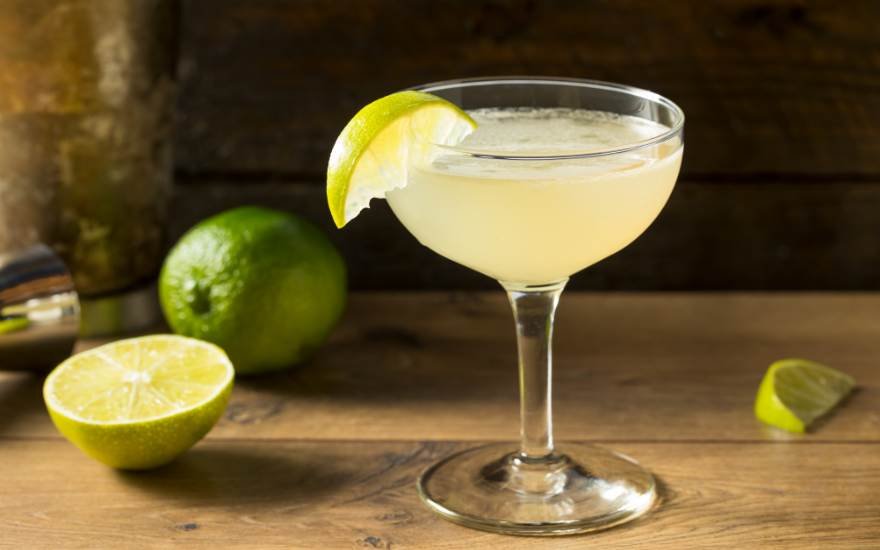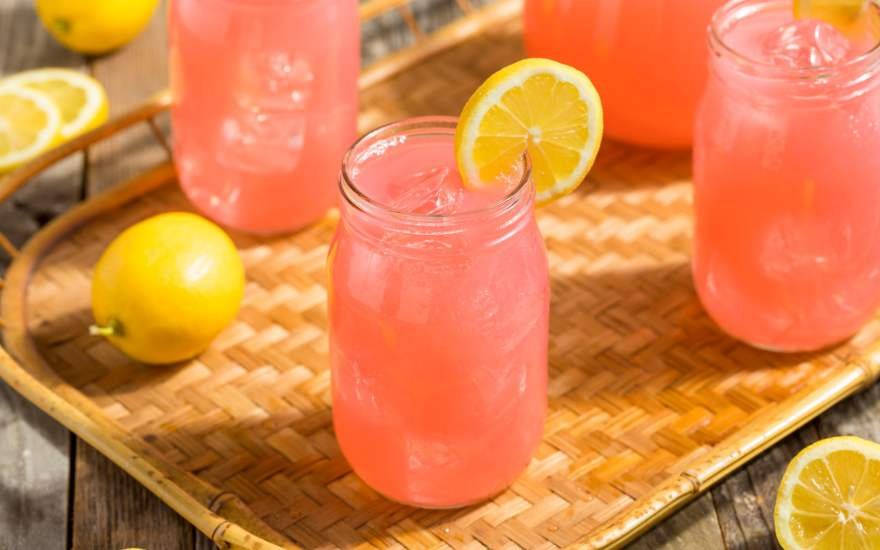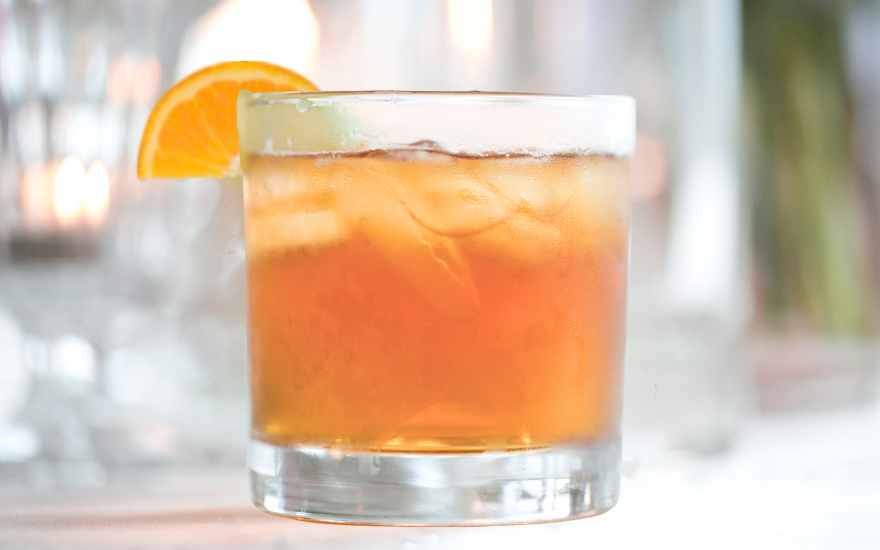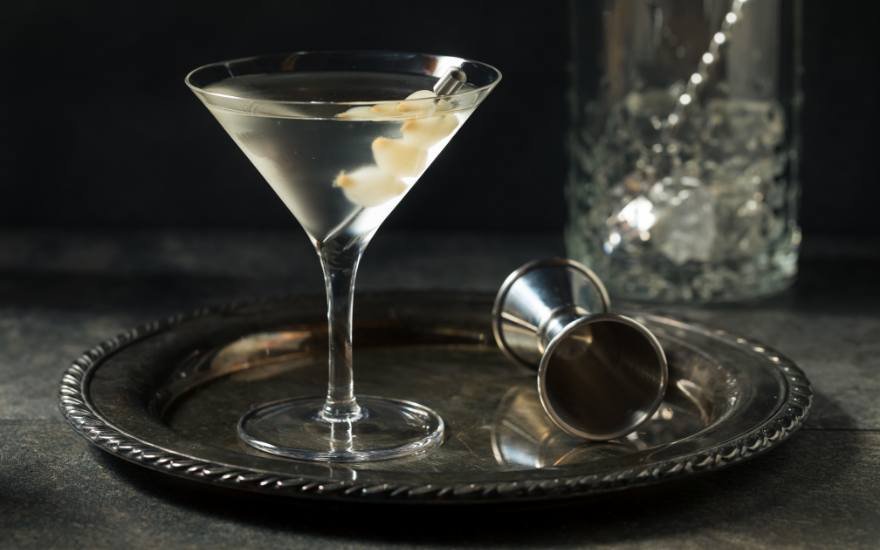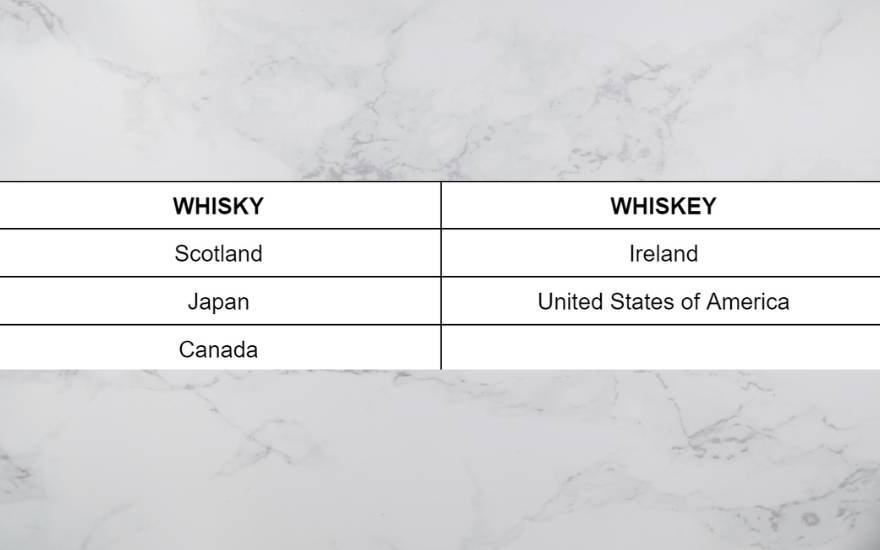85, 86, 200. If you have spent an evening sitting at a busy bar top watching your favourite bartenders work, you have likely heard them shout these numbers - and more - to each other in service. But what are they actually talking about? These codes are for staff to communicate clearly and concisely about what needs to be done to maintain the standard of service, and occasionally, talk about the guests in the venue.
These codes can be numerical or short phrases that indicate a situation requiring attention, whether to restock a certain item, to let your team know you’re going for a quick bathroom break, or to ensure a patron's safety. The bartender code has been around as long as anyone can remember, so no one really knows how it all came to be, but we do know where certain phrases or codes have come from.
In fact, most of the phrases we’ll be taking a look at today, originate from prohibition-era soda jerks. Soda jerks were generally male teenagers, so their language of course comes from a perspective of childish playfulness. Darcy O’Neil’s book “Fix The Pumps” covers the history of soda jerk slang in depth, and some phrases still have homes in the bars, restaurants, and delis of today. A majority of them, however, are now defunct.
For the modern bartender, there are some phrases that I recommend not adopting, due to their nature of objectifying the guests. These codes are a sign of the times they come from. For example, the aforementioned title of O’Neil’s book is Old Soda Jerk Code for leaving your station to ogle a large-breasted female patron. On the other hand, some codes are necessary for a green bartender to learn if they want to ensure the safety of their guests.
It is also worth noting that not every bar uses bar codes, and some venues (mine included) use codes and shorthands that are not universal, so codes you may hear in your usual watering hole may not apply to the next venue you visit.
NUMERICAL BARTENDER CODES:
These numerical codes are for bartenders and waiters alike to communicate about what needs to be done, or what is happening in the bar:
85 - Almost out of stock on a product, also a quick way to request a restock on a certain item as a priority.
86 - Completely out of stock on a product, meaning there is none left in the back-of-house areas either. Suppose you hear “86 Agave!” while at the bar, you can kiss your Tommy’s Marg goodbye.
68 - A product is back in stock after being 85 or 86. If you hear “68 Agave!” you can now again resume your regular Tommy’s drinking. This call can also be used to request a restock; “Can I get a 68 on agave please!”
50 - If you hear this while sitting at the bar, be alert! You might see some bottles flying around! Originally coming from flair bartending culture, it essentially means “Catch!” right before tossing a colleague something instead of passing it to them, but has evolved over the years to mean that as well as a quick way to say “Could you please pass me the ____”. An example of this would be one bartender saying the other:
“I’m 86 agave in well, 50 me yours!”
100 - A quick way of saying clean-up is required, normally after a guest leaves the venue and the bartop or their table needs to be cleared and wiped down.
200 - This means a customer is waiting to be served, usually followed by a location. “200 on the door” means that a group has just walked into the venue and requires attention. It can also be used in conjunction with table numbers, so “200 on 9” means that table 9 requires service, whether that be taking an order, clearing empty plates and glasses, or just answering a question they have.
600s - The 600s codes are for members of staff to communicate with each other about breaks being taken, with each unit digit signifying what the break is for and for roughly how long they will be off the bar.
601 - Toilet break for a number 1
602 - Toilet break for a number 2
603 - Smoke break
608 - Break to eat some food
630 - Half an hour break for staff meals
P.S. This one is lesser used as (unfortunately) not many bars offer full half-hour breaks and meals on shift.
700 - If you have heard this number get called out and someone comes to your service, feel flattered! A 700 bar call means that an attractive customer requires attention.
While this bar call is a sly compliment, this is a call I do not use nor allow in my venue. Our guests choose to visit our venues because they feel safe imbibing in our care, and in my eyes, it is considered misconduct to breach that trust. Another implication is that in my experience, calling a 700 always receives more preferential service than a 200, when all guests in our venue should receive the same standard of immaculate care.
81 - This lesser-used code call is shorthand code for waters, and can be applied to specific tables or the whole venue. “81s on 101” means table 101 needs a top-up on water, while “Round of 81s” means to do a lap of the venue and refill waters wherever may be needed.
95 - Walk out! If a customer is leaving without paying, intentionally or otherwise, the first member of staff to notice this will call out “95 on 12!”, meaning that table 12 is leaving the venue without paying their bill. Not all 95s are intentional theft, in fact, in my current venue, a 95 is more often than not, an inebriated guest who has simply forgotten to pay, and upon being told is almost overly apologetic.
PHRASES AND WORDS in the bartender code:
These phrases and words serve the same purpose as the numerical codes and offer awareness of the current situation in the bar.
BACKS - More than likely the most used call in the hospitality industry, this means that someone is coming through the bar behind the back of someone. This serves to make people aware of your location if you are carrying a tray of drinks, a sharp object, a hot plate of food, or even just to avoid collisions.
CORNER - Serving the same purpose as “Backs!”, this is used when turning a blind corner to avoid collisions and spillages.
P.S. “Backs!” and “Corner!” can be used in conjunction with “Hot!” or “Sharp!” to indicate what the risk is.
ON THE FLY / ON FLY / OTF - This call normally follows a task to indicate urgency. A common example of this is you have forgotten to put through a drinks order for a table and remember 5 minutes later. In this scenario you go up to the bar, apologise to the bartender and ask for their drinks to be made “on the fly”. Another example of this is to request an urgent restock on a product; “Can I get a 68 on agave on the fly please!”
NO FLY - This call more often than not, is used following an 86 call, to signify that there is no urgency to restock the product/more urgent things to take care of before restocking it. For example “86 Agave, no fly!” means that the agave bottle in the well is empty, but it is not needed immediately, so finishing the current tasks is more important, and the bottle will be refilled upon completion of the current jobs.
IN THE WEEDS - If you hear your bartender call this on a busy day, it means that they are slammed. You can put good money on the fact that when you are in the weeds, everything that can go wrong, will.
“I was in the weeds, and then I broke a glass into the well and 86d it. I could have cried”
This has happened to me more times than I would care to admit but is part and parcel of the job.
ANGEL SHOT / ASK FOR ANGELA - The most important call for a young bartender to learn is the one that comes from the customer. If a customer comes to the bar and asks for an Angel Shot, or says “Can I Ask for Angela?”, it means that they feel unsafe in their current company, and would like to be escorted to safety by a member of staff.
There are certain specifications that a customer may ask for with their Angel Shot that bartenders and patrons alike should be familiar with.
ANGEL SHOT NEAT - The patron needs to be escorted to their vehicle.
ANGEL SHOT ON THE ROCKS - The patron would like the venue to order a taxi for them and be escorted to it upon its arrival.
ANGEL SHOT WITH A LIME WEDGE / WITH A TWIST - The patron is in immediate danger and the police need to be contacted.
It is of great importance, that bartenders and patrons be familiar with the protocol of an Angel Shot and its specifications, to ensure the safety of everyone in the venue.
VENUE SPECIFIC CODES AND SHORTHANDS:
As mentioned earlier, some venues have bar calls and codes that are specific to them. This may be because of a unique piece of equipment, language between two close friends in the venue that the rest of the team has adopted, or simple necessity.
Here are some of the ones that I have worked with over the years:
HANDS - This is a call I started using in my time working the bars of Johnnie Walker Princes Street, and have then taken it with me to my current venue, Bittersweet. The call means I have built all the drinks for this round, but I only have 2 hands, so I need an extra pair to shake and stir all of this. This is a call that came out of necessity, in a bar where people order 10 different cocktails for the same table, an extra set of hands to expedite the ticket time is always welcome help. Plus “Hands please!” is faster, and more precise communication than “Hey mate, would you please be able to shake this drink, and stir this one for me?”.
G&Gs - This is a call that a couple of bars use, but each one has a variation of the call. G&Gs stands for “glassware and garnishes”. Similar to “Hands!”, it asks for help finishing up a round of drinks, by prepping the glassware and garnishes required.
WAWAS - A personal favourite of mine that has followed me from my part-time pub tending days, coined by a former bartender, current software engineer, and good friend, Charlie Bryce. We used this in place of 81 at the Jolly Botanist and is still in use over there even though none of the members of the team that popularised it still work there.
By Fowwaz Ansari

